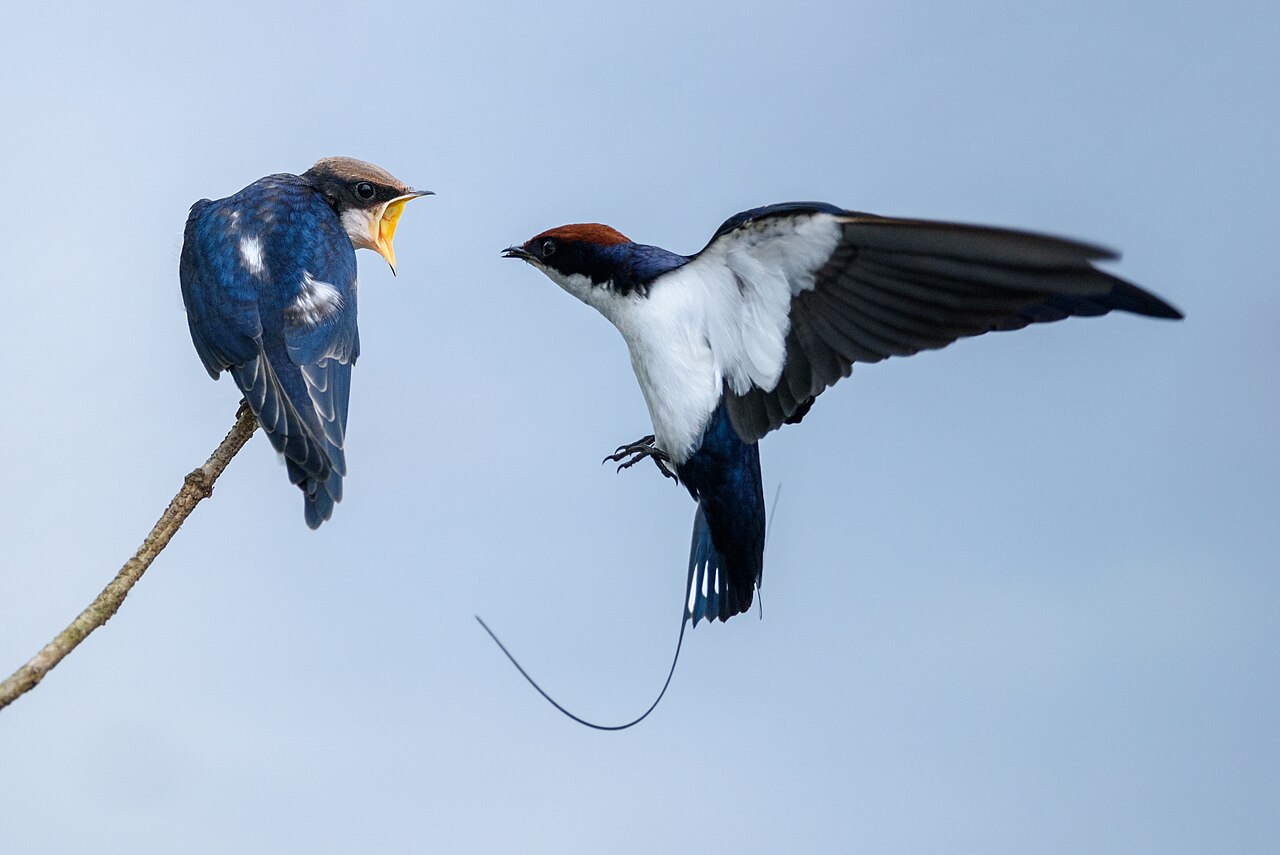
The PhD Gate: Answer Me These Questions Three…
Published by Muoi Tran on June 27, 2025
In Monty Python and the Holy Grail (1975), King Arthur and his knights must cross the Bridge of Death by answering three questions from a cranky bridge keeper. Get them right? You may pass. Get them wrong? Into the abyss you go. Surprisingly, applying for a PhD feels… exactly like that. Recently, our lab ran two PhD recruitment rounds, which meant I had to play the role of the grumpy bridge keeper — twice. In this blog post, I share what really happens behind the scenes of PhD recruitment: what questions matter, why some promising candidates don’t make it across, and how you might survive the crossing (spoiler: knowing the airspeed velocity of an unladen swallow won’t help, but reading this carefully might). FYI, this famous scene can be watched on YouTube.
Before the PhD Gate Opens
Most of the essential information about doing a PhD in Sweden is already well explained in this excellent piece by Professor Richard Torkar, head of our CSE department. But what happens before a position is even advertised? That’s where the behind-the-scenes work begins.
First, the research topic needs to be defined — yes, before we even meet a single applicant. In our most recent recruitment, we opened positions in broad but predefined areas like network security, blockchain, and AI/ML. While these topics sound wide-ranging, they still need to be set in advance, often shaped by project goals and funding constraints. In the future, recruitment will likely be more specific topic-wise.
Next comes the delicate art of timing. The application deadline must be chosen with care: far enough in the future to allow applicants time to prepare, but not so far that the eventual start date drifts into the academic twilight zone. The call has to stay open for at least 30 days — and ideally not overlap too much with the Great Swedish Summer Shutdown™.
And then there’s budgeting. Of course, we all know that a PhD in Sweden is a paid position with a solid salary and full benefits (which is part of what makes it such an attractive option). What surprised me, though, was just how many other things a PhD position costs — like office space, infrastructure, and yes, coffee. Thankfully, in our case, the positions were fully funded for five years.
Opening the PhD Gate
Once the paperwork, approvals, and internal back-and-forth emails are done, the PhD positions are officially announced on the Chalmers central job portal. I usually also share the call on LinkedIn, relevant mailing lists, and sometimes via private academic networks. You never know where the right candidate might be hiding.
Our calls typically stay open for 1–3 months. Personally, I lean toward longer posting periods to give qualified candidates enough time to apply — rushing it often means missing out. That said, one of our recent recruitments had to close just after a month so we could finish the hiring before Sweden shuts down for the summer (yes, that’s a real thing). Plot twist: that position is being re-opened, with a new deadline on 30 September 2025.
 |
|---|
| Figure 1 — An illustration of any professor’s mailbox. |
During the open period, both I and our unit head received a steady stream of emails. Some were great — to the point (e.g., asking about eligibility). Others… less so.
Here are some less-than-ideal examples:
Asking questions that were already clearly answered in the job ad or on our website (yes, we know how to use search too).
Declaring “strong interest” without any specific question or context.
Notifying us that an application has been submitted (we’ll see it in the system, no worries).
Sending incomplete applications.
Sending complete applications.
I get the last two bullets — you’re probably applying to multiple positions and hoping to get quick responses. But here’s the reality: careful evaluation takes time. We read applications thoroughly to avoid overlooking strong candidates. If you’re just hoping to get lucky or be rejected quickly, our process might frustrate you — we don’t cut corners to evaluate anything submitted outside the centralized portal.
Emailing with real questions is absolutely okay — I personally respond to all inquiries. But keep in mind: not all professors do. Some ignore them entirely; others may interpret poorly written or irrelevant questions as red flags.
So if you’re thinking of reaching out:
Yes – ask about unclear instructions, eligibility concerns, or specific personal circumstances.
No – don’t ask about things clearly explained online, don’t email your application, and definitely don’t send without any actual question.
The Three Questions
Just like in the scene from Monty Python and the Holy Grail, getting a PhD position involves answering a series of questions. Ours may not send you into a canyon if answered incorrectly, but they do determine who gets to cross the bridge into our program.
What is your name?
Once applications are in, we rank candidates based on three main criteria:
- The prestige of the master’s program: We consider factors such as university rankings, how closely your degree aligns with the field (e.g., Computer Science > Electrical Engineering > others), and how recent your graduation is.
Relevance of your background: We carefully read your personal statement to understand whether your academic and project experiences align with the research areas — e.g., Networking, Security, AI/ML (as in our most recent recruitment).
Other merits: We look at awards, research publications, grades, and anything else that shows initiative and excellence.
What is your quest?
Based on these rankings, we shortlist around 20–30 candidates and invite them for a first-round interview. This is deliberately informal — a 30–60 minute chat over Zoom, or coffee if you’re in Gothenburg. We talk about your motivation, past experiences, and details from your application. You’re also encouraged to ask us anything — about the project, the lab, the expectations, or even Sweden’s dramatic weather patterns. The goal? To see if there’s a good match. It’s hard to define, but if the conversation flows naturally and we both come away thinking “this could work,” that’s a great sign.
What is your favorite color?
After the first interviews, we narrow down the list to 10–15 candidates for a second round. At this stage, we assign a small take-home task. In our recent recruitment, the task was to pick a paper from a top-tier security conference, review it, and present your thoughts in a recorded video. This tests your ability to understand latest research, communicate technical ideas, show attention to detail and genuine interest. We don’t expect a production quality — but with all the time and GenAI tools at your disposal, we want to see your best version.
What is the capital of Assyria?
By now, we’re usually down to just a few excellent candidates — all of whom we’d be thrilled to work with. But, sadly, there’s typically only one position. To decide, we run a third round: a more involved take-home coding assignment over 2–3 weeks. During this time, candidates can check in with me weekly to discuss ideas and progress. Think of it as a mini trial run — a way to see how we collaborate and communicate. The final result of the assignment is useful, but what matters most is how we work together along the way.
What is the air-speed velocity of an unladen swallow?
If you’ve reached this point, congratulations — you’re at the final interview. This can take place online (especially if visa delays are involved), or in person here in Gothenburg. It typically includes: a presentation of your master’s thesis, a walk-through of your take-home assignment, and a Q&A with the hiring committee. For in-person interviews, we also include lunches or coffee breaks with current PhD students — not just to evaluate you, but to help you evaluate us. Choosing a PhD position is a two-way decision, and culture fit matters.
 |
|---|
| Figure 2 — A pair of African swallows (air-speed velocity unknown). |
So, How to Not Being Flung Into the Abyss?
Whether you’re seeking the Holy Grail or just a solid PhD position (not only with us), here are some tips to improve your odds at the bridge:
Read the call carefully. Yes, all of it. The details are there for a reason. If something’s unclear, feel free to ask — just make sure it’s not something Google could answer faster.
Tailor your application. A generic, mass-mailed cover letter is like answering “blue” when the correct answer was “yellow”.
Make your statement count. We really do read it. Use it to show that you understand the topic, care about the project, and aren’t just applying everywhere with Ctrl+C/Ctrl+V.
Be prepared to engage. Interviews and assignments aren’t just tests — they’re ways for us to understand how we’d work together. If things click, we’ll know and you’ll know too.
Respect the process. It’s slow, yes (some candidates even complained). But it’s designed to be fair. Trust that we’re not just flipping coins — we’re trying to make thoughtful, long-term decisions.
And finally…
- Don’t panic if you’re not selected. Many great candidates don’t get in — often simply because there’s only one spot. A rejection here doesn’t mean you’re not capable; it just means this wasn’t the bridge this time.
Final Notes from the Bridge Keeper
Being the bridge keeper isn’t always fun. There’s guilt in turning away promising candidates, frustration in sifting through applications that don’t follow instructions, and genuine sadness in having only one position to offer when several people clearly deserve a shot.
But to me, it’s also rewarding. I get to meet brilliant minds from all over the world, hear fresh perspectives, and — every now and then — see that spark of curiosity and drive that makes someone a great researcher. That’s the part that keeps me standing at the bridge.
So if you’re reading this and considering applying — thank you. For taking the time, for showing up, and for trying to cross. Whether you make it past this bridge or find another, may your quest continue.
And remember: when asked your favorite color, just commit to an answer.
